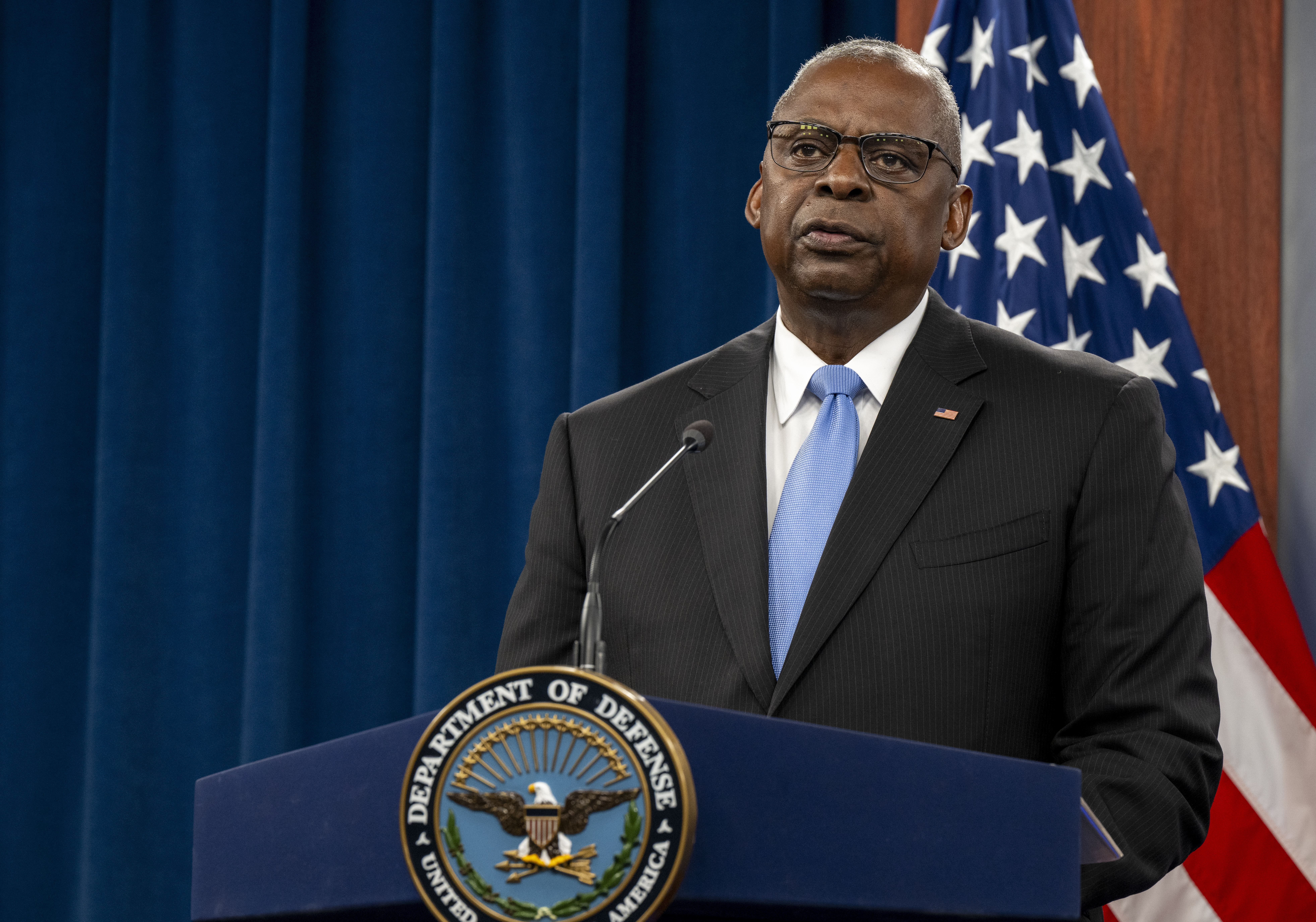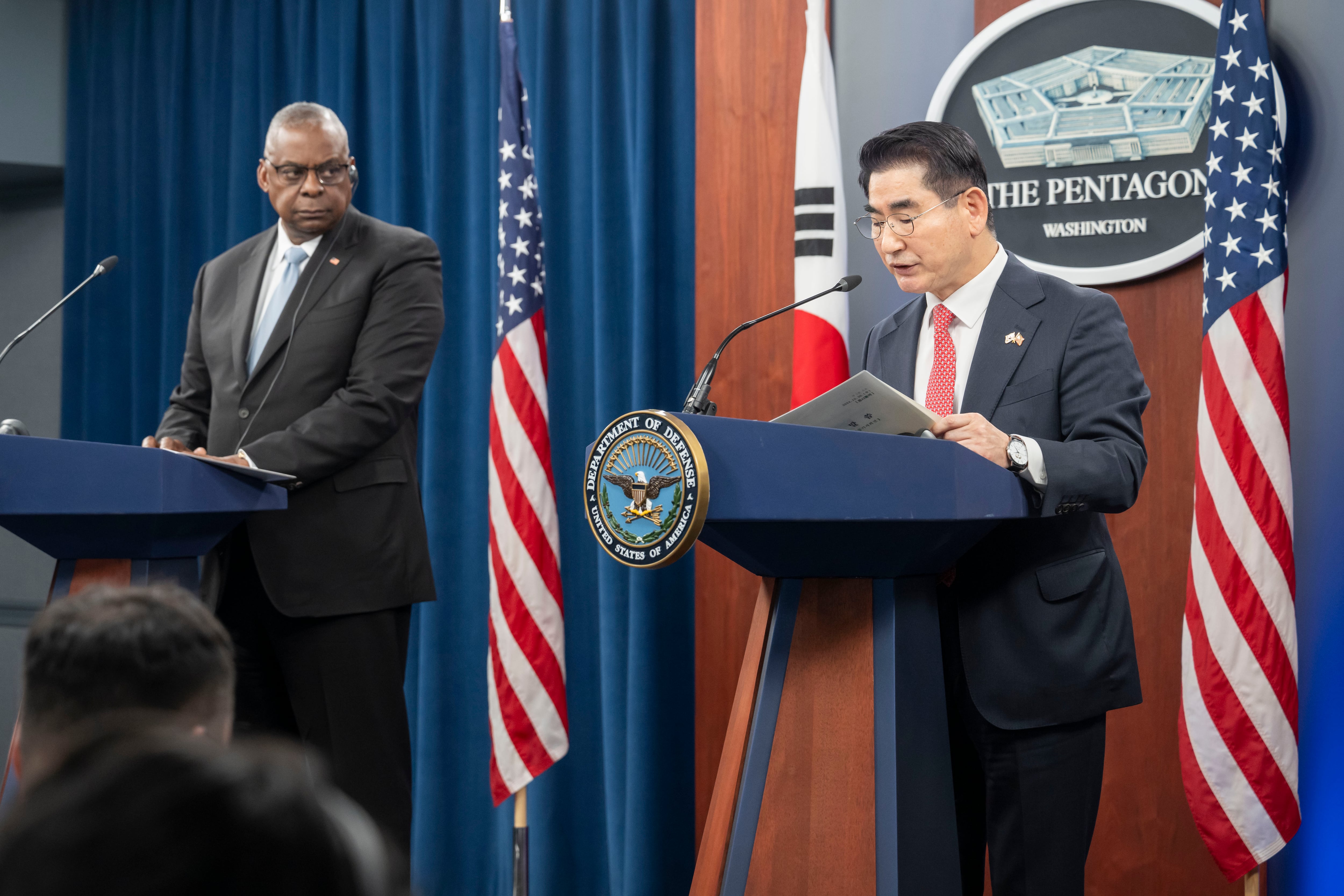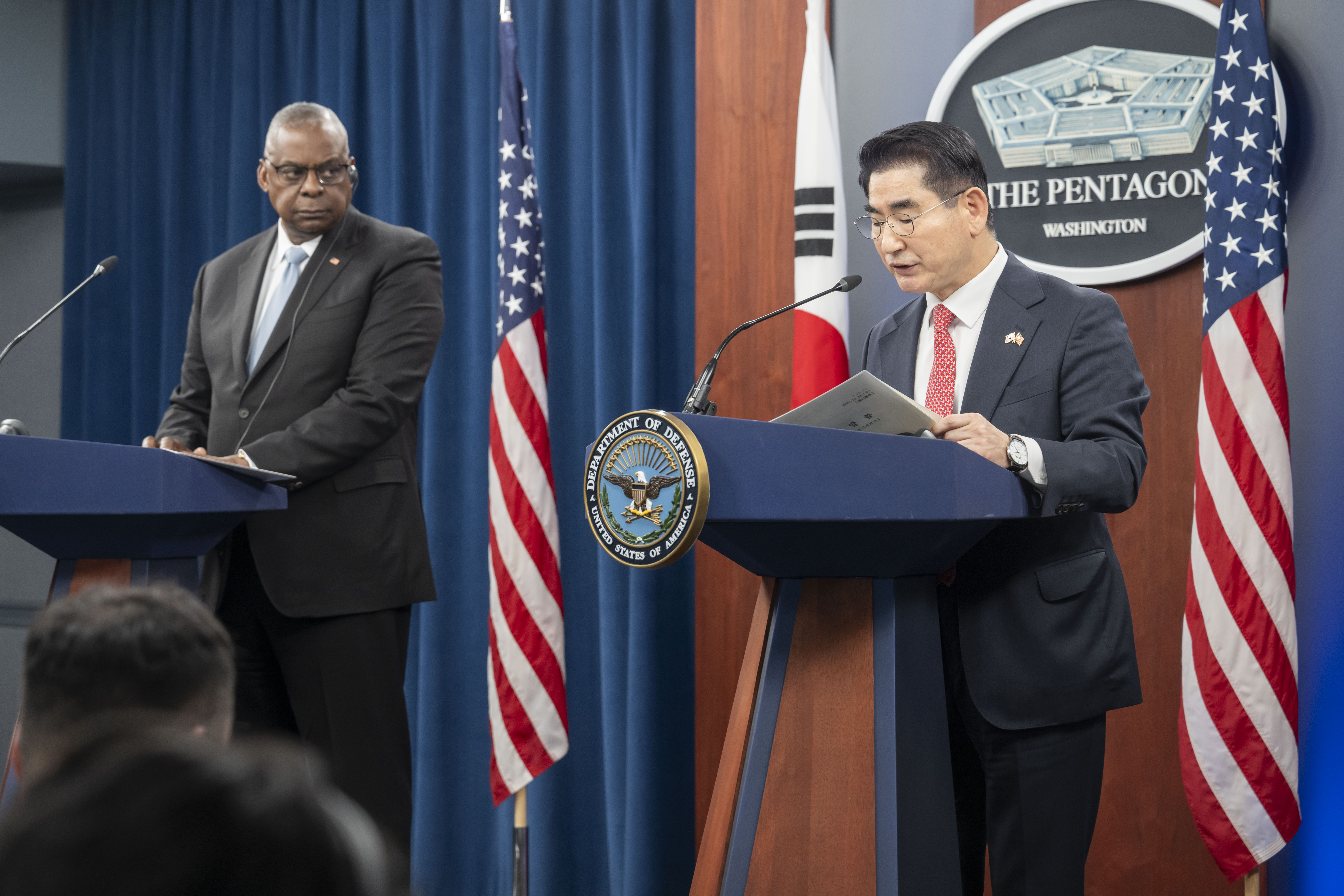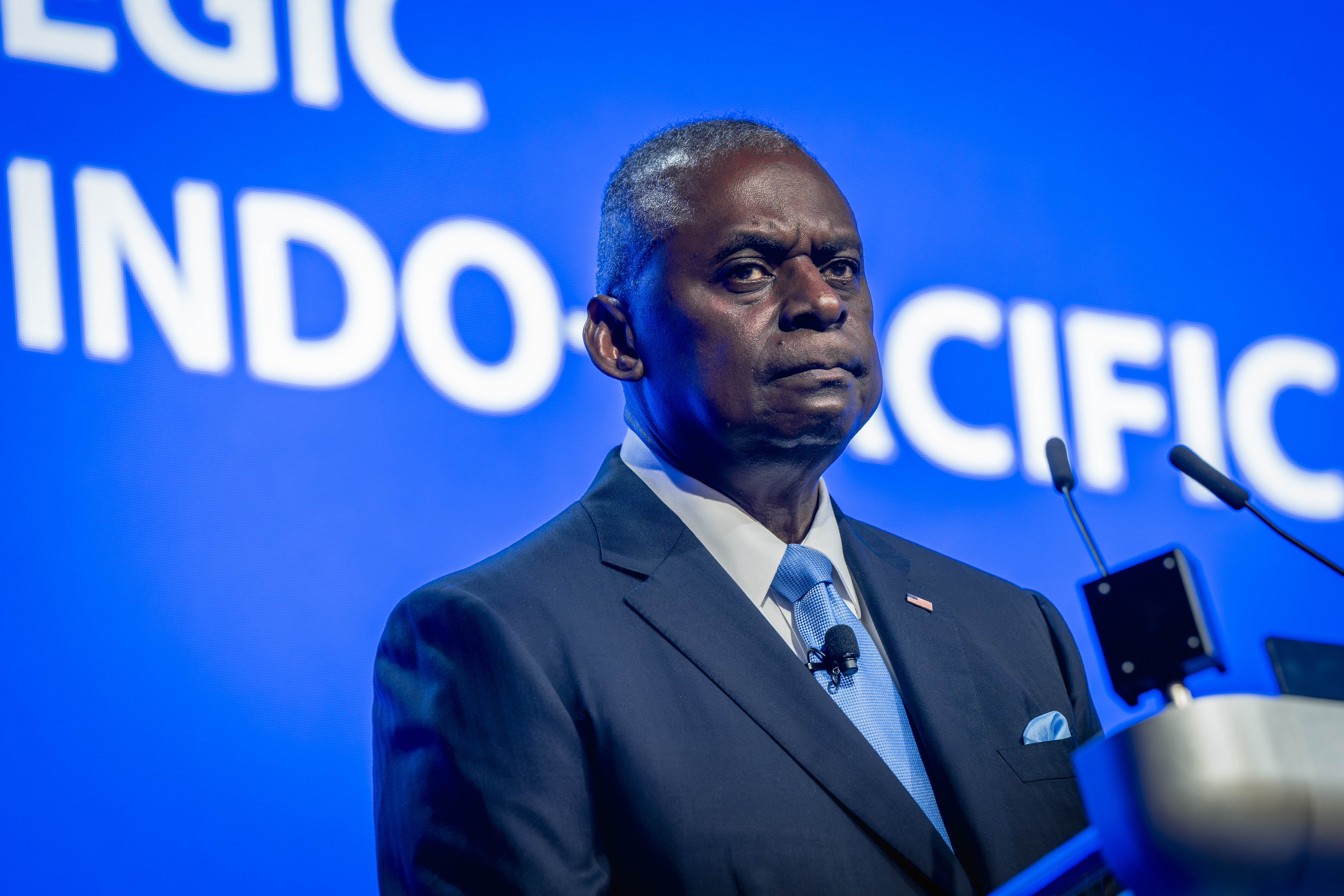SEOUL, South Korea (AP) — North Korea test-fired an intercontinental ballistic missile for the first time in almost a year Thursday, demonstrating a potential advancement in its ability to launch long-range nuclear attacks on the mainland U.S.
The launch was likely meant to meant grab American attention days ahead of the U.S. election and respond to condemnation over the North’s reported troop dispatch to Russia to support its war against Ukraine. Some experts speculated Russia might have provided technological assistance to North Korea over the launch.
North Korean leader Kim Jong Un observed the launch, calling it “an appropriate military action” to show North Korea’s resolve to respond to its enemies’ moves that have threatened the North’s safety, according to the North’s state media.
Kim said the enemies’ “various adventuristic military maneuvers” highlighted the importance of North Korea’s nuclear capability. He reaffirmed that North Korea will never abandon its policy of bolstering its nuclear forces.
North Korea has steadfastly argued that advancing its nuclear capabilities is its only option to cope with the expansion of U.S.-South Korean military training, though Washington and Seoul have repeatedly said they have no intention of attacking North Korea. Experts say North Korea uses its rivals’ drills as a pretext to enlarge its nuclear arsenal to wrest concessions when diplomacy resumes.
The North Korean statement came hours after its neighbors said they had detected the North’s first ICBM test since December 2023 and condemned it as a provocation that undermines international peace.
South Korea’s Joint Chiefs of Staff said North Korea could have tested a new, solid-fueled long-range ballistic missile on a steep angle, an attempt to avoid neighboring countries. Missiles with built-in solid propellants are easier to move and hide and can be launched quicker than liquid-propellant weapons.
Japanese Defense Minister Gen Nakatani told reporters the missile’s flight duration of 86 minutes and its maximum altitude of more than 7,000 kilometers (4,350 miles) exceeded corresponding data from previous North Korean missile tests.
Having a missile fly higher and for a longer duration than before means its engine thrust has improved. Given that previous ICBM tests by North Korea have already proved they can theoretically reach the U.S mainland, the latest launch was likely related to an effort to examine whether a missile can carry a bigger warhead, experts say.
Jung Chang Wook, head of the Korea Defense Study Forum think tank in Seoul, said that it’s fair to say the missile involved in Thursday’s launch could carry North Korea’s biggest and most destructive warhead. He said the launch was also likely designed to test other technological aspects that North Korea needs to master to further advance its ICBM program.
North Korea has made strides in its missile technologies in recent years, but many foreign experts believe the country has yet to acquire a functioning nuclear-armed missile that can strike the U.S. mainland. They say North Korea likely possesses short-range missiles that can deliver nuclear strikes across all of South Korea.
There have been concerns that North Korea might seek Russian help to perfect its nuclear-capable missiles in return for its alleged dispatch of thousands of troops to support Russia’s war against Ukraine. U.S. Defense Secretary Lloyd Austin said Wednesday that North Korean troops wearing Russian uniforms and carrying Russian equipment are moving toward Ukraine, in what he called a dangerous and destabilizing development.
Lee Choon Geun, an honorary research fellow at South Korea’s Science and Technology Policy Institute, said the early results of Thursday’s launch suggested Russia might have given a key propellant component that can boost a missile’s engine thrust. He said that a higher thrust allows a missile to carry a bigger payload, fly with more stability and hit a target more accurately.
Jung said he speculates Russian experts might have given technological advices on missile launches since Russian President Vladimir Putin visited North Korea for a meeting with Kim in June.
Kwon Yong Soo, an honorary professor at South Korea’s National Defense University, said that North Korea likely tested a multiple-warhead system for an existing ICBM. “There’s no reason for North Korea to develop another new ICBM when it already has several systems with ranges of up to 10,000 to 15,000 kilometers (6,200 to 9,300 miles) that could reach any location on Earth,” Kwon said.
The North Korean confirmation of an ICBM test was unusually quick since North Korea usually describes its weapons tests a day after they occur.
“North Korea could have probably thought that its rivals could look down it after it gave away so much in military resources to Russia,” Yang Uk, an expert at South Korea’s Asan Institute Institute for Policy Studies. “The launch may have been intended as a demonstration to show what it’s capable of, regardless of troop dispatches or other movements.”
U.S. National Security Council spokesperson Sean Savett called the launch “a flagrant violation” of multiple U.N. Security Council resolutions that “needlessly raises tensions and risks destabilizing the security situation in the region.” Savett said the U.S. will take all necessary measures to ensure the security of the American homeland and its South Korean and Japanese allies.
South Korean military spokesperson Lee Sung Joon said the North Korean missile may have been fired from a 12-axle launch vehicle, the North’s largest mobile launch platform. The disclosure of the new launch vehicle in September had prompted speculation North Korea could be developing an ICBM that is bigger than its existing ones.
South Korea’s military intelligence agency told lawmakers Wednesday that North Korea has likely completed preparations for its seventh nuclear test as well. It said North Korea had been close to testing an ICBM.
In the past two years, Kim has used Russia’s invasion of Ukraine as a window to ramp up weapons tests and threats while also expanding military cooperation with Moscow. South Korea, the U.S. and others say North Korea has already shipped artillery, missiles and other conventional arms to replenish Russia’s dwindling weapons stockpiles.
North Korea’s possible participation in the Ukraine war would mark a serious escalation. Besides Russian nuclear and missile technologies, experts say Kim Jong Un also likely hopes for Russian help to build a reliable space-based surveillance system and modernize his country’s conventional weapons. They say Kim will likely get hundreds of millions of dollars from Russia for his soldiers’ wages if they are stationed in Russia for one year.








